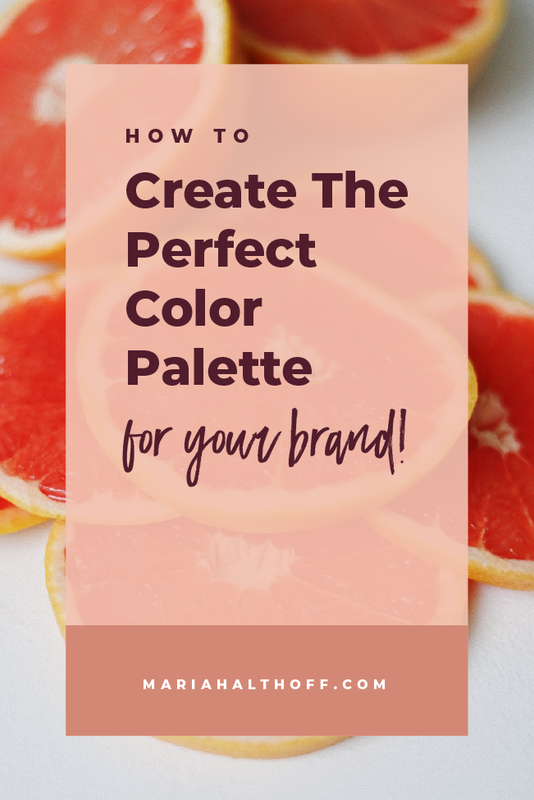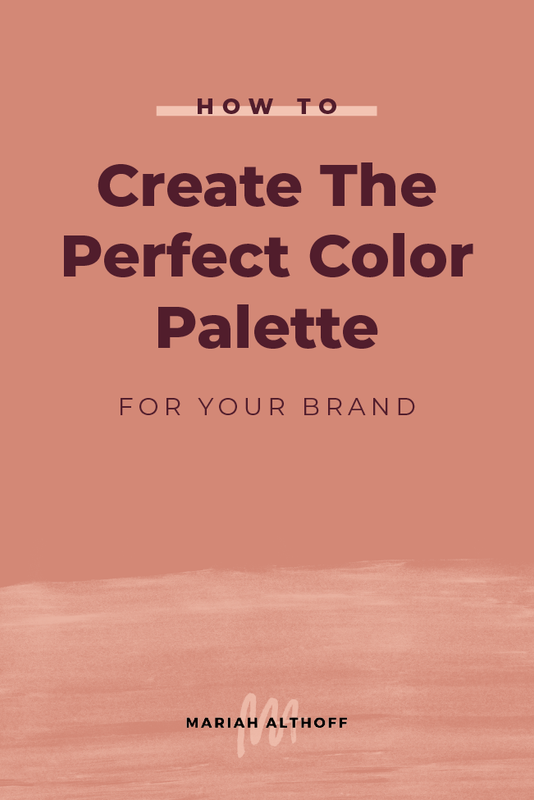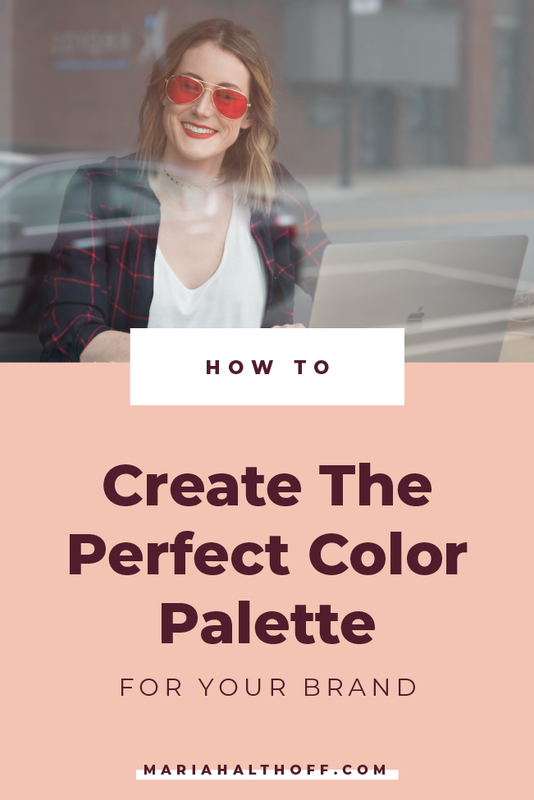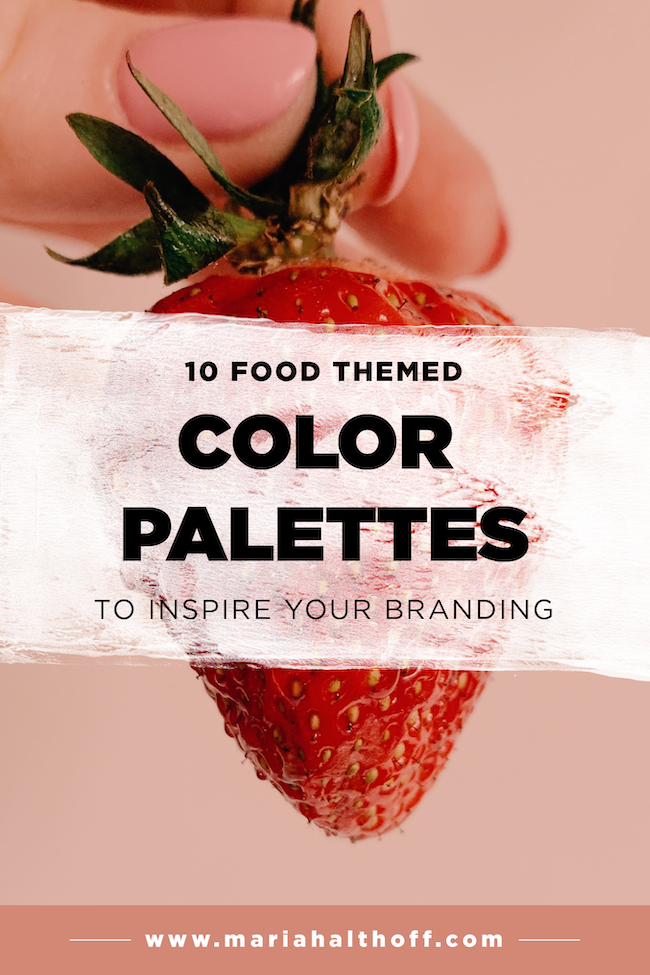How to Create the Perfect Color Palette for your Brand
If you’re anything like I was, you’re having a crazy hard time figuring out what you want your brand’s color palette to be. It has to be reminiscent of you and your brand’s personality, it has to attract the right target audience, and it has to look freaking awesome. Easier said than done right?!
I too had a super hard time coming up with my own color palette. Although that is normally one of the first things I start with when creating a visual identity for my clients, it ended up being one of the last things I focused on when creating my personal branding. Oops!
I started off with my palette just being black, white and coral. But, as my business continued to grow I realized I need a few secondary colors to use when creating social media graphics. Because my brand was already partially created, I found it even harder to find a color palette that matched up to my brands personality right away. Because of this, I had to pull out all of my tricks to find the perfect color scheme to match my developing brand.
The moral of this story is to completely nail down your brand identity before you launch it, instead of partially making it up as you go and hoping something sticks. I promise you, its way easier to do it all in the beginning. Learn from my mistakes, people!
To aid you in your branding process, I have spelled out a few of the ways that I have found color palettes that really speak to the brand I am working on developing.
Before you begin looking at colors, create a list of words that describe your brand’s personality and/or aesthetic.
I ask my clients to do this in their branding questionnaire before I begin working on their project. Not only does it force them to dig into their brand identity, but it gives me a glimpse of what they may be envisioning (whether they know it yet or not).
Even if you are designing your own brand, this is an important step in the process. You may think you already know how to describe your brand and aesthetic in your head, but getting it out on paper can often be a bigger challenge than you may think.
For example, I recently worked on some branding for a coffee shop. They wanted to go for a rustic and vintage feel but didn’t like the color red. They wanted their branding to be inviting, friendly and not too girly.
You too should come up with 5-10 description words like this for your brand.
From here, if you still don’t have a clear picture in your mind of an overall look and feel for your brand identity, do a brain dump of words that branch off of your original list. For example, if I continue with this coffee shop example, I may start writing down words like: antique, mason jars, distressed, country chic, fields, wildflowers, mismatched table settings, old photos, mugs, coffee beans.
Having this list of words nailed down will help you with the following steps.
Use Pinterest for Inspiration
Once you have your list of words nailed down, go on Pinterest and make a board for your brand inspiration. Make it a secret board if its not relevant to your audience or if you don’t want anyone else seeing it.
Next, start searching. I love using Pinterest as a search engine for inspiration. It gives you way prettier image results than Google and has a huge library of photos, color palettes, brand examples and design inspiration. Start typing in words that you have written down. I would start with more relevant words like “Rustic Branding” or “Vintage Chic” and work your way down the list. Start saving anything relevant to your ideal brand’s image. Anything from photos to examples of other branding, to possible color palettes is all fair game. Once you have around 30-40 pins you can begin to really hone in on your color palette.
You can go about this in a few different ways:
Find a photo that describes the overall look and feel of your brand
Pick a photo that really stands out to you on your inspiration board. This might be a photo that has really pretty colors or that feels like it just really encompasses the mood of your brand. Now, you can then pull colors directly from that photo!
You can do this one of two ways:
Use an Adobe program like Illustrator or Photoshop.
Pull up your photo into one of these programs and use the eye dropper tool (shortcut “I”) to select different areas of the photos and grab different colors. You may have to click around in the same area a few times until you find the perfect shade. If the color you pull isn’t exactly perfect, play around with the RGB or CMYK sliders until you find the exact color you’re looking for.
Once you find a color you like, save that swatch by clicking on the upper right drop-down menu in the color swatch window. Choose “Create new swatch…”. This will then save that color to your swatches panel so you can keep selecting more colors from the photo and come back to all of your saved colors at the end.
Once you have selected several colors from the photo, I would suggest creating a square of each color on your art board or canvas, and play around with the combinations until you have found the perfect one. I suggest selecting five colors from the photo to begin with.
Use a Color Generator Website
CSS Drive is a great site to use for this process as well. All you have to do is upload your image or enter the image URL, and it will pull colors right from the photo for you. Easy right?! It gives you a light, medium and dark color palette option, AND gives you the options to choose your own color combination from all of the colors it pulled from the photo.
Once you have created the perfect color palette from the original image, you can even save the colors as a photoshop swatch file, which will be super helpful for designing your branding down the road. If you don’t have/use photoshop, you can also hover over each color swatch and copy down the hex value, which shows up under the source image, next to the selected color.
Pick 1-3 Dominant Colors, then Find Coordinating Colors to go with Them
After drawing inspiration from your Pinterest board, you may know that you want a specific color to be your dominant color, but have no idea what other colors you should pair with it. Here are a few options you can try:
Coolors.co
Coolors.co allows you to find color palettes at random by pressing the space bar and cycling through different color combinations until you find one you like. This can be really helpful if you just want to see lots of different options. Sometimes you just know what you like once you see it!
You can also select your own colors by inputting the color value (CMYK, RGB, Hex or PMS). All you need to do is hover over a color bar and different color code options will appear at the top for you to change accordingly. Once the desired color is selected, lock that color by clicking on the padlock icon, then keep pressing space bar until you continue to find colors you like together. Once you have generated the perfect color palette, copy down the values of each color you selected.
Adobe Color
If you are an Adobe Creative Cloud member, you can use Adobe Color which will also generate color palettes for you. If you select the main color you are trying to pair, Adobe will give you the analogous, monochromatic, triad, complementary, compound, and shades color combinations according to your original color. (So pretty much any fancy color combo you can imagine.) This program also makes designing easier because you can save your color palette to your Creative Cloud account and use it in all of your design programs down the road.
Create a mood board
This is an important step in defining your visual identity, but it can also be a huge stepping stone to nailing down your color palette. By taking 5-10 like images (from your Pinterest inspiration board) and combining them onto one mood board, you may be able to construct a color palette based on those images. If when you put together all of these images you recognize a few consistent colors among them, you can pull together your color palette from this mood board.
As you can see, there are several ways for you to come about your color palette. Some options may work better for you than others, but I have used all of these methods at one point or another to create my clients’ color palettes. Sometimes when I am really stuck I have to use several methods until I nail down the best one. So if this takes you way longer than it should, don’t feel bad because that even happens to real designers from time to time. 😉
If you’re still stuck and need some inspiration, check out my Pinterest page. I have a zillion different brands, color palettes, patterns, mood boards, you name it pinned. I use my Pinterest every single time I start a new project to get some inspiration. Going through my old pins has been soo helpful in the beginning stages of design work, so go ahead and see for yourself if you can get some inspiration from there too! (Don’t forget to follow me while your at it!)
Related Post – >> How to Create a Mood Board to Inspire your Branding
In the comments below, let me know if you have any other methods of coming up with color palettes!















